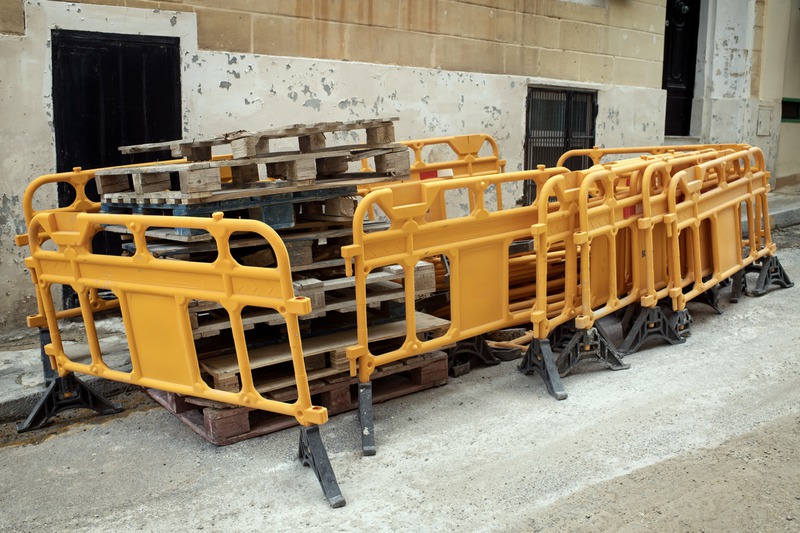Temporary barricades serve many purposes in public venues, construction sites, shopping centers, and events. They protect both workers and pedestrians by marking unsafe zones and guiding foot traffic. Many people often take these barriers for granted, yet specific safety rules and regulations regulate their use.
Why Are There Specific Rules for Using Short-Term Barriers?
Specific rules regarding the temporary use of barriers exist to secure public safety. Regulations help prevent injury by clearly defining areas that workers and the public must avoid. Protective boundaries also indicate safe passageways and reduce confusion in busy locations.
Authorities enforce safety measures for short-term barriers, ensuring proper setup and maintenance. Proper compliance prevents accidents, improves organization, clarifies directions, and assures compliance with local codes. Following the rules about appropriately placed barriers significantly reduces risk and creates safer environments.
Basic Requirements for Temporary Safety Barriers
Temporary safety barriers must meet general standards to guarantee effectiveness. Requirements depend upon certain factors such as placement, visibility, and sturdiness to maintain a safe environment. If barriers don’t reach these standards, safety can become compromised.
-
Visibility: Temporary barriers must stand out clearly to pedestrians with bright colors or reflective tape.
-
Durability: Systems require sturdy materials that handle various weather conditions without weakening.
-
Height & Length: Regulations specify proper height and length so barriers adequately block unsafe zones.
In addition to traditional barriers, using modular construction walls for retail offers a versatile solution that can adapt to safety requirements while fitting seamlessly into commercial environments.
Correct Installation Procedures for Safety Barriers
Installation methods must follow clear guidelines, ensuring effectiveness. Authorities impose specific instructions for positioning and maintaining barrier systems to achieve maximum safety. Proper installation reduces potential liabilities or accidents caused by incorrect barrier setups.
Places requiring temporary barriers often provide adequate training to workers. Workers require accurate knowledge about secure departmental guidelines, installation methods, and maintenance schedules. Suitable training decreases potential risks and aids overall compliance with regulations.
Barrier Safety Regulations for Construction Sites
Construction sites present potential dangers requiring strict safety guidelines. Regulatory authorities enforce special rules about barriers in these locations. Following designated specifications protects workers, visitors, and pedestrians around such environments from potential harm.
These rules include specific barrier strength, type, proper markings, and adequate coverage around dangerous terrain. Inadequate setup or disregard of guidelines often leads to serious injuries or safety violations. Authorities regularly monitor compliance to avoid related penalties or fines.
Guidelines for Temporary Barriers at Public Events
Organized public events require temporary barricades to manage crowds effectively. Authorities emphasize crowd control and stress safe pedestrian paths. Proper barriers prevent accidents and ensure a smooth transition around venues.
-
Signs must communicate clearly to direct crowds, increase efficiency, and enhance orderliness.
-
Barriers require placement in strategic locations with secure columns to ensure stability.
-
Personnel supervise designated barrier locations actively preventing unauthorized entry or movement.
Temporary Barrier Maintenance and Inspection Rules
Temporary barricade systems require routine inspections to maintain optimal safety. Regular checkups assess the physical conditions, visibility, stability, and equipment integrity of these systems. Post-installation inspections promptly identify possible damage or danger.
Authorities enforce frequent maintenance schedules for temporary barricade systems. Regular visual monitoring helps correct minor issues quickly. Rectifying defects promptly avoids potential safety concerns and increases the life expectancy of the barricades.
Regulatory Consequences for Neglecting Barrier Safety
Non-compliance with barrier safety regulations bears legal risk. Companies or individuals found negligent may face penalties, lawsuits, or license suspension. Regulatory authorities remain alert for deviations, conducting random checks to ensure adequate compliance.
Maintaining compliant barrier usage safeguards organizers and property owners against liabilities. Following the stipulated safety criteria avoids unnecessary legal complications, which may damage reputations, cause financial losses, or impact future project opportunities.
Proper Barrier Removal and Disposal Procedures
Specific guidelines address appropriate removal efforts for temporary barricades. After construction or events have concluded, barrier dismantling must be carefully followed by safety requirements. Immediate and orderly removal minimizes disruption, avoids confusion, and maintains overall safety.
Most regulations highlight suitable disposal methods, accounting for environmental practices. Authorities require materials to be recycled or disposed of according to local legislation. Careful adherence to stipulated barrier removal procedures avoids unnecessary disposal problems and contributes positively to environmental safety goals.
Compliance Assistance from Safety Barrier Specialists
To meet regulatory requirements smoothly, many industries consult industry specialists like Boston Retail Solutions. Companies specializing in barrier and safety regulations provide valuable support through expertise and focused attention. Industry experts develop tailored strategies ensuring compliance across various sectors.
These specialists offer assistance throughout installation planning, specifically tailored barrier solutions, training, and ongoing compliance assistance. Clients gain safer workplace environments, improved adaptability to changes in regulations, and minimized risk. Proper collaboration with reliable specialists boosts efficient compliance management success.
Final Thoughts
Temporary safety barriers represent important assets protecting both public and worker safety across differing environments. Clear regulations set standards guaranteeing safe barrier usage practices. Ensuring precise requirements follow-up supports improved safety, avoids fines, and increases public security effectively.

